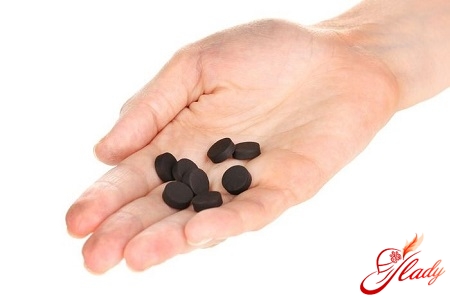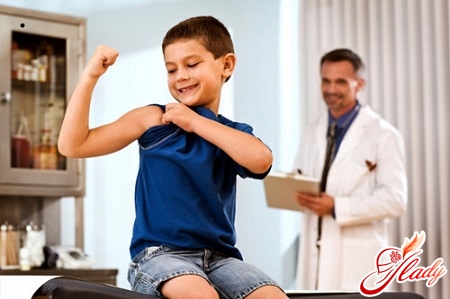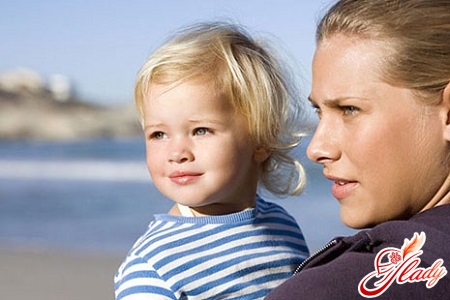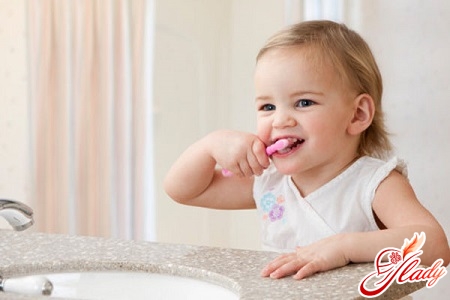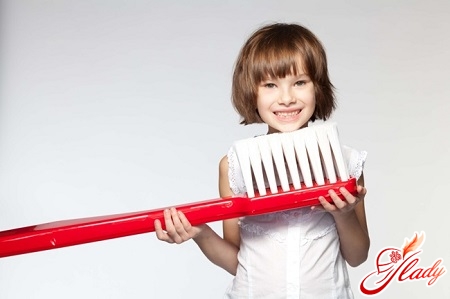
Many parents think that brushing teethbabies should start at about 3 years of age. This is a misconception - dentists categorically state that you need to start accustoming your baby to brushing his teeth no later than the first tooth begins to erupt. That is, everything needs to be done somewhere from the age of 4-7 months. Why is this so important? Caries on baby teeth appears very quickly, because the enamel of a baby is thin and sensitive. And a sick tooth is, at a minimum, a source of infection that can spread further. In addition, it complicates the chewing process, which can also negatively affect the functioning of the gastrointestinal tract.
When do you need to start cleaning your teeth?
So, you are wondering when to start cleaningteeth for a child? It is necessary to accustom a child to oral hygiene already from infancy, as soon as the first complementary foods appear in his diet: juices, fruit purees, etc. Why not earlier? In infancy, babies instinctively react negatively to everything that does not resemble mother's milk in taste and smell, that is, they try to spit it out or burp it up. As a preventive measure at this age, you need to give the child a little boiled water to drink after each feeding, which will help clean the mouth from the remains of milk or formula. You can also regularly wipe his gums with a gauze swab soaked in boiled water. It is important to ensure that this procedure does not cause a negative reaction in the child. You can combine this procedure with a cheerful song in the morning or a lullaby (in the evening). Having formed in the baby the need for oral hygiene at a very early age, literate parents can be sure that the child will only be able to go to the dentist for a preventive examination.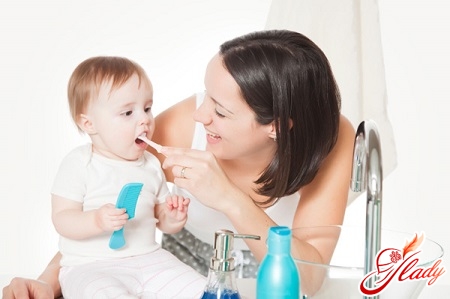
How to clean the first teeth
Of course, adult items are not suitable for children.hygiene, and children under one year will generally need special brushes and children's hypoallergenic toothpaste. In the first year of life, the child will mostly swallow toothpaste. Moreover, it is usually produced with attractive fruit flavors, for example, strawberry, raspberry, etc. If the first object that parents will massage the gums with should be a gauze swab, then a little later it is worth using special brushes - fingertips with fleecy or rough bristles. Again, it is important to ensure that the procedure is as painless as possible for the baby, because during the period of teething, the gums become inflamed and ache. A soft daily massage with a special brush will help the teeth to erupt faster, that is, it will relieve pain and accelerate the growth of teeth. You need to take special care of such brushes, because pathogenic bacteria tend to grow in a sour-milk environment. Therefore, after each use, you need to thoroughly rinse the brush under running water and change it every 2 months. Special dental wipes are an excellent means of caring for your baby's teeth - they are impregnated with xylitol, which perfectly cares for the oral cavity, eliminating pathogenic microbes. The only downside is the rather high cost, because the wipes are disposable and do not require any processing. However, they will be simply irreplaceable on the road, when there is no way to properly care for a latex brush.
What dentifrices are suitable for kids
At the very beginning, when parents are just starting outTo treat gums and teething teeth in a baby, it is best to use gel toothpastes intended for babies up to 3 months. They contain milk enzymes and lysozyme, a gentle antiseptic that helps rid the oral cavity of bacteria. For babies up to six months, you should use milk-flavored products, and for those children who are already starting to introduce complementary foods, baby toothpastes with fruit flavors are suitable. In this case, the amount of toothpaste used should be increased gradually: if at first it is only used to lubricate a gauze pad, then closer to a year the amount of paste can be increased to the size of an average pea. Since babies often swallow toothpaste, in no case should you use products containing fluoride - accumulating in the child's body, it can cause extremely negative consequences. When to start brushing your child's teeth with a more "adult" toothpaste? Experts recommend doing this from the age of 8.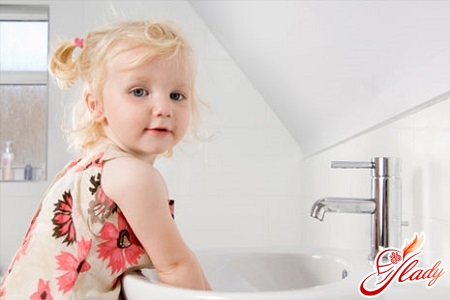
What to do if the baby refuses to brush his teeth
First of all, don't give up.It is only up to the parents whether the child's teeth will grow beautiful and healthy or whether the baby will have to get acquainted with dentist's tools at a very early age. A common misconception of parents is that caries on baby teeth is not scary, they will fall out anyway. A sick tooth is both a source of infection and a source of pain and discomfort. And if the first visit to the dentist is remembered for extremely unpleasant manipulations, in the future the child will have problems with dental treatment. If in infancy, when parents themselves clean baby teeth and gums from plaque, the child begins to be capricious and refuses the procedure, it is worth trying other oral hygiene products. This may be a product with a different smell and taste. In addition, you can return to gel pastes intended for infants up to six months: they have a neutral taste and smell, so they are not perceived as a foreign object. It is also important to remember that a child perceives new information best in a game, so brushing teeth can be combined, for example, with a favorite children's counting rhyme, that is, for each syllable, parents perform one simple movement to clean their teeth and gums. Somewhere around a year old, babies begin to actively imitate their parents. At this age, it is appropriate to accustom a child to brushing teeth, setting a personal example. Seeing how actively mom does it, the child himself begins to consider brushing teeth a necessary element of personal hygiene.
What does the baby industry offer to the kids for cleaning their teeth?
Somewhere from a year, when the child is already accustomed toindependent use of a toothbrush, it makes sense to buy a specialized children's toothbrush. It can be made in the form of a figurine of a favorite cartoon character or, when used, will play a melody, that is, while the music is playing, the child should continue the procedure of brushing teeth. It is important to choose brushes with soft bristles that are minimally traumatic to the baby's tender gums and thin enamel. Its surface should be small (cover about 2 baby teeth), the handle should be comfortable, and the brush itself should be attractive to your child. After all, everything depends on what the beginning will be - cheerful and funny or gloomy and scary.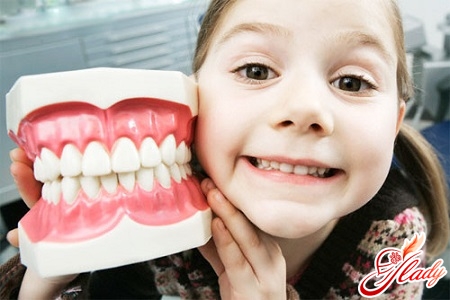
What kind of games can you offer a child to fix the skill of brushing your teeth?
If babies under one year old do not yet have the necessary motor skillsskills to brush their teeth on their own, the following game moment can help here. The parent and the child hold the brush by the handle and show the correct movements to the child's favorite song or rhyme. For children under three, you can offer, for example, the game of Cariesland, where evil wizards - carieslands - hunt for children's teeth. And they can be protected by the Dentists, who hide in the toothbrush and children's toothpaste, helping to fight the evil wizards. Also, by analogy with the chimney sweep, who is washed "clean-clean", you can offer the game of "Toothsweep", i.e. arrange a competition to see who brushes their teeth better. The winner is the one who does it longer (here it would be quite appropriate for parents to cheat a little and "give in" - let the child's victory in the game serve as a basis for further careful observance of the ritual of brushing teeth). You can also find interesting video games and cartoons on the Internet that will help you learn the most important movements with your baby to clean the oral cavity as thoroughly as possible. In addition to teeth, gums and cheeks, you also need to treat the baby's tongue; most children's brushes have an outer rough surface designed specifically for cleaning the tongue. What movements should you remember to brush your teeth as thoroughly as possible? There are several simple movements that you need to teach your baby, this will help you brush your teeth as carefully as possible:
- The working part of the brush is placed at an angle of approximately 45 degrees and as if "sweeping" it from the base of the gum to the tip of the teeth.
- The working part of the brush is located horizontally and we move the brush back and forth.
- The brush handle is placed vertically and we clean the surface from the gum to the cutting edge of the tooth.
Correctly performed movements will help to cleansethe oral cavity as effectively as possible, thereby reducing the risk of developing caries, gum inflammation and, in the long term, avoiding tooth loss. Regular oral care will ensure the health of your baby's milk teeth and prevent their possible loss. The correct bite is formed in childhood. The loss of a milk tooth can provoke the incorrect formation of the remaining teeth, and here you can't do without braces! In addition, improperly performed treatment of a milk tooth (which, unfortunately, is not uncommon) can lead to the fact that the infection will get into the root of the permanent tooth and damage it. If we summarize all of the above, we can conclude that accustoming a child to regular tooth brushing, instilling skills in proper oral care will help him avoid the dentist's chair in the future, that is, only a preventive examination will remain, which children perceive exclusively positively. Thus, parents will be able to help the baby grow up with healthy and beautiful teeth, which is very important both for appearance and for the health of the child's body as a whole.




